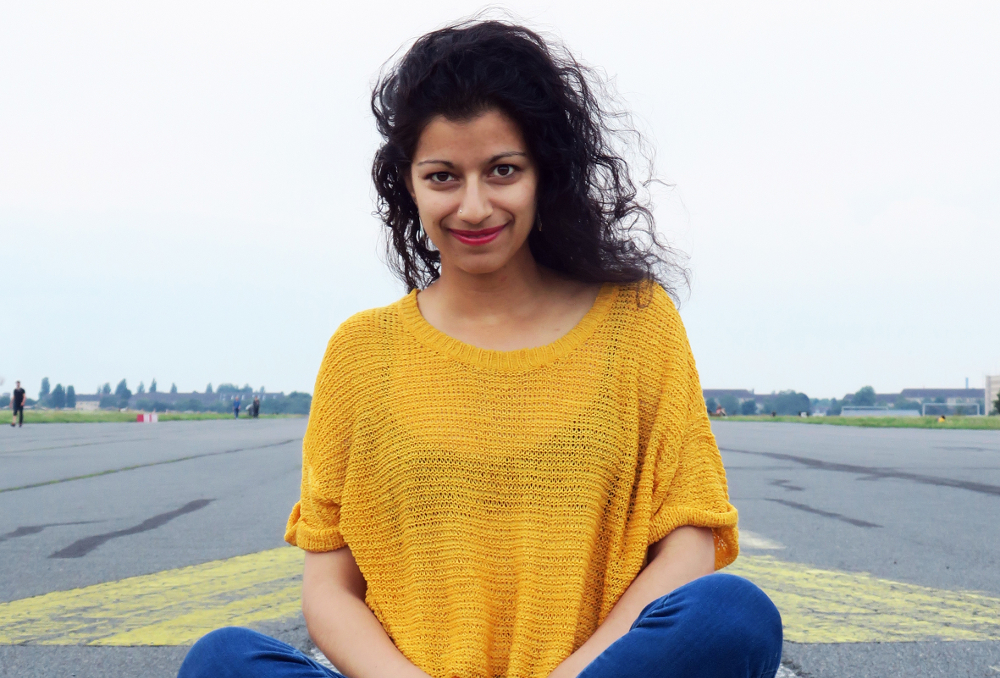
Photo by Helin Bereket
Audio artist and activist Shanti Suki Osman on giving a voice to women of colour in her upcoming performance with the Akademie der Autodidakten at Ballhaus Naunystrasse.
British-born director Shanti Suki Osman arrived at sound art through the unlikely route of feminist electro-pop, making up one half of the music duo Late Nights in Squat Bars. It’s a medium the 36-year-old has championed into an arena for activism through her podcast series Hidden Stories and now with the youth-performance group Akademie der Autodidakten at Ballhaus Naunynstrasse.
In Future Sounds you use sound performance to chart the experience of women and non-binary people of colour in Berlin. What can we expect to hear?
I’m an advocate of “listening as practice”. And to become an active listener, you have to shut up first, which begs the question of whose voice is always being heard and whose isn’t. Having different layers of sound allows us to unpick these multi-layered stories, and also to play with perspective – through sound, you can have notions of past, present and future, and left and right all happening at once.
You took the production process onto the streets to collect field recordings for the performance. How did you engage with the soundscape of the city?
On our field recording sessions we listened to contradictions and moments of harmony in Berlin’s urban environment. Recording in Prinzessinnengarten led us to explore the figure of mother earth and feminist genealogies – passing down stories as a strategy for survival. Berlin’s many Baustellen also played a huge role in our exploration. We questioned whether the word means demolition or re-birth, and for whom. We think of the city as a space of constant construction, where we’re always building strategies to help us exist.
This style of urban exploration is reminiscent of Baudelaire’s flâneur. Was this an influence?
My understanding of the flâneur has always been a white man walking to cafés and thinking philosophically. Walking around the city alone as a woman of colour is not the same – it’s dangerous. In Future Sounds there are indulgent moments of self-reflection, but also empowerment in the face of pain. The ideal city projected by Future Sounds is a place where you don’t have to quickly scan the room to see how many other brown people are present; a city where you can feel comfortable because space has been created for marginalised voices and bodies.
As a singer, radio host and sound artist, you work across a variety of different mediums. Is an interdisciplinary approach to art necessary when dealing with intersectionality?
If we’re looking for spaces to create non-dominant narratives, we automatically look for other forms of expression. It’s part of the fun but it’s also a necessity. That’s where an intersection comes in and actively changes the form of the artwork. I’ve spoken to sound artists who made the switch from big performances with expensive synth equipment to smaller plug-and-play installations and that’s a decision bound up in class and wealth.
The Akademie der Autodidakten describe what they do as a Bildungspraxis – an educational practice. Does art have to be pedagogical?
Art is the arena in which I am an activist. I’m at a stage now where I don’t think I could produce art that doesn’t have some kind of embedded meaning. I’m grateful for those who can, but then again, where does a message start and end? If a non-binary artist of colour or a disabled musician writes a pop song purely to entertain, for me that’s still political – because they’re asserting their right to have banal airtime too, alongside these white dudes with guitars.
Does producing a progressive feminist piece at Ballhaus Naunynstrasse, a bastion of post-migrant performance, ever feel like you’re shouting into an echo chamber?
Sometimes, but shared experiences are important for mutual empowerment, and it’s also important to remember the nuance of individual narratives. All the participants of the group are non-white non-male performers, but we still represent a huge variety of identities. And there’s always more work to be done in terms of bridging the gap between the stage and what’s happening on the ground. Treatment of women or non-binary people at the after-show party or behind the scenes is just as important.
Future Sounds Jun 7, 8, 20:00, Jun 9, 19:00 Ballhaus Naunynstrasse, Kreuzberg


